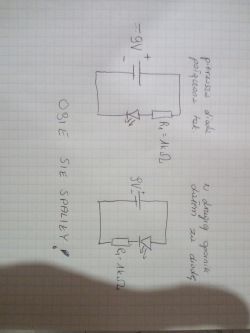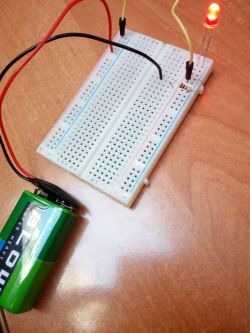Hold_on1 wrote: line of resistance
The line of least resistance.
Hold_on1 wrote: the current flowed through the galvanic connection in the board, instead of the resistor
You start to use pretty vocabulary, but a galvanic connection is nothing more than a metallic connection. I guess you still don't know why.
And it is not entirely true that the current flows only along one path, because the current is appropriately divided into individual sections.
It flows as you thought, but in this case it is in the branch with a resistor ("red") that flows VERY, very, very small current, incomparably smaller to the branch, let's call it "yellow".
Hold_on1 wrote: So it turns out that I tatted the diode with horrendously high intensity. Here is a "diagram" of how the current actually flowed and a picture of the correct connection.
All of you have already written it and know it, diagrams are unnecessary for us

.







